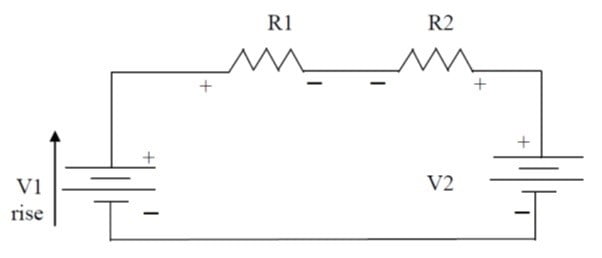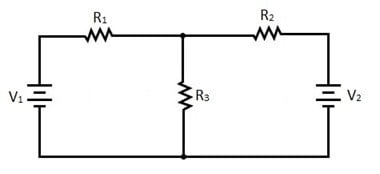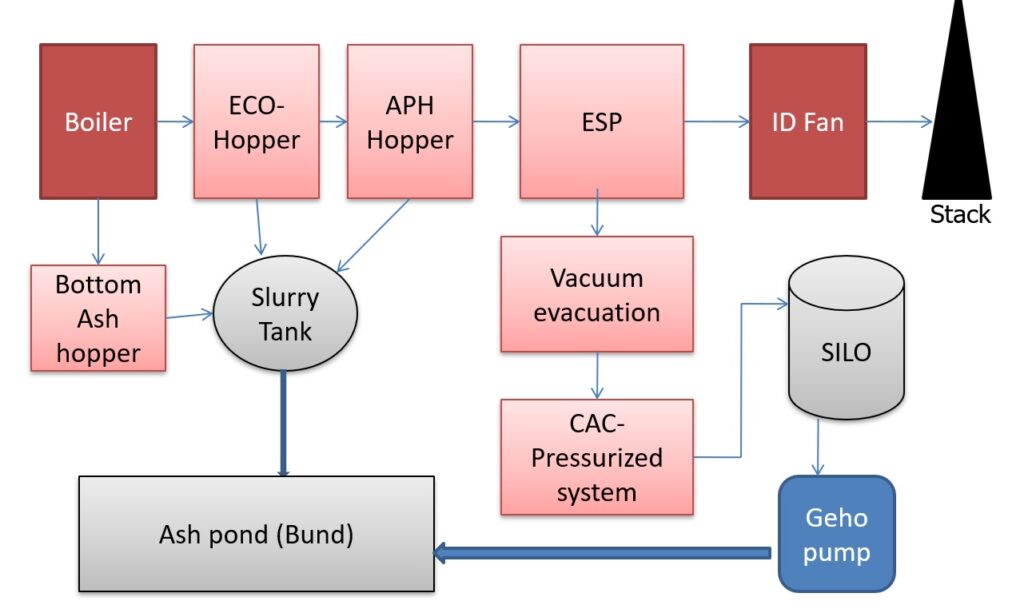Table of Contents
ToggleAim
Verification of Kirchhoff’s laws
Apparatus
Breadboard, Batteries or DC regulated power supply, Resistors, Multimeter, Connecting wires, Alligator clips, PC with Multisim software for simulation.
Theory
Kirchhoff’s Current Law
This law is also called Kirchhoff’s point rule, Kirchhoff’s junction law (or nodal law), and Kirchhoff’s first law.
Statement: The algebraic sum of all the currents at any node or a junction of a circuit is zero.
This law is particularly useful when applied at a position where the current is split into pieces by several wires. The node is a point in the network where two or more circuit elements meet.
The direction of incoming currents to a node is taken as positive while the outgoing currents is taken as negative.
n is the total number of branches with currents flowing towards or away from the node.

However, by Kirchhoff’s current law, I3 = I1 + I2, and thus, as shown in Figure, we need to use only two current designations. In other words, if we know any two of the three currents, we can then find the third current.
In the same way, if there are, say, four branch currents entering and leaving a node point, and if we know any three of the currents, we can then find the fourth current, and so on.
or
Kirchhoff’s Voltage Law
Statement: In a closed circuit, the algebraic sum of all the EMFs and the algebraic sum of all the voltage drops (product of current and resistance) is zero.
The rise in potential is taken as positive and the fall in potential is taken as negative.
Consider the following circuit.

Applying Kirchhoff’s Voltage law to the above loop,
Note that V2 appears as a voltage drop, because we go through that battery from
positive to negative. Alternatively, putting all the battery voltages on the righthand side, the above equation becomes
Circuit Diagram

Procedure
Kirchhoff’s Current Law
- Assume the current flowing through each resistor as I1, I2 and I3.
- Assume the direction of currents flowing through each branch (resistor).
- Measure the current flowing into the top node of the circuit from each of the three branch
- To measure the current, you should break the circuit to insert the
- You must also measure the polarity of the current in a reliable If the current flows into the node, then the current should be measured from the positive terminal to the negative terminal.
- If the magnitude of the current is negative, write it as negative only.
- Record these measured currents.
- Add the three currents to check that the sum of the currents is zero (or close to zero) or sum of the incoming currents is equal to sum of outgoing currents.
Kirchhoff’s Voltage Law
- Connect the circuit as per the circuit diagram on bread board.
- Switch on the power supply.
- Measure VR1, VR2 and VR3.
- Select any desired loop say loop (1), apply KVL as per given in observation table and verify the result.
- Repeat above step for another loop.
Precautions
- All the connection should be
- Ammeter must be connected in series while voltmeter must be connected in parallel to the components (resistors).
- Before circuit connection working condition of all the components must be checked.
- The electrical current should not flow the circuit for long time, otherwise its temperature will increase and the result will be
Observations
R1=_____ Ω
R2=_____ Ω
R3=_____ Ω
For Kirchhoff’s current Law
Current across individual resistor R1, R2 & R3
I1 = ____ A
I2 = ____ A
I3 = ____ A
For Kirchhoff’s voltage Law
V1 = _____ V
V2 = _____ V
VR1 = _____ V
VR2 = _____ V
VR3 = _____ V
Calculations
Verifying KCL using measured values:
I1 + I2 + I3 = ——–.
Verifying KVL using measured values:
[Apply KVL to loop 1 and loop 2 and verify]
Result
The sum of current going toward the junction is _____A .
The sum of current going away from the junction is _____A.
Similarly, sum of e.m.f. and potential drops in first loop is _____V.
and sum of e.m.f. and potential drops in second loop is _____V.
Conclusion
At a node, sum of incoming current is equal to sum of outgoing current hence Kirchhoff’s current law is verified.
In a closed circuit, the algebraic sum of all the EMFs and the algebraic sum of all the voltage drops (product of current and resistance) is zero, hence Kirchhoff’s voltage law is verified.
Recent posts
Related posts:
- Verification of Nortons Theorem
- Verification of Superposition Theorem
- Verification of Thevenins theorem
- Verification of Maximum Power Transfer Theorem
- Verify Z-Parameters of Two-port Network
- Verify Y-Parameters of Two-port Network
- Verify Hybrid Parameters of Two-port Network
- Study the transient response of a series RC circuit
- Study the transient response of a series RL circuit



Hello electronicsforyou.in admin, Thanks for the in-depth post!